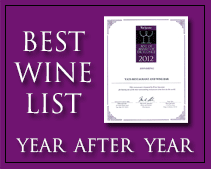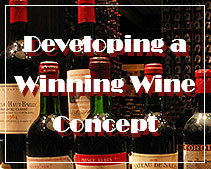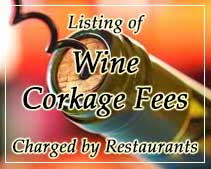Calorie labeling leads to healthier eating
January 20, 2011
For consumers in California, New York City, Portland and Seattle, it might not come as a surprise that Starbucks’s raspberry scone contains 500 calories or the foot-long meatball marinara sandwich at Subway has about 1,160. But because these few local and state governments have introduced mandatory menu labeling in chain restaurants, have people been cutting back on the calories in their orders?
Consumers across the country will start seeing these numbers on menu boards when labeling requirements roll out nationwide as part of the new health care reform law. Findings on this approach’s effectiveness, however, have been decidedly mixed.
One small study conducted at an Asian-style fast food restaurant even tried to actively solicit customers to cut calories by asking if they would “like to downsize that” (rather than the now maligned “supersize that” offer) to cut 200 calories from their meals. About a third of consumers took the offer, but that rate did not improve when calorie counts were posted, reported New York University’s Brian Elbel at the American Public Health Association meeting in 2010. This difference suggests that although some consumers might be willing to change their lunch routine with a prompt, calorie figures did not seem to tempt them away from “visceral urges” when they stepped up to place their order, Elbel explained.
A new yearlong study, published online January 14 in the American Journal of Preventive Medicine, found that consumers at one fast food chain in the Seattle area were unfazed by calorie counts listed with their favorite menu items.
In January 2009 King Country in Washington State, which includes Seattle and some of its suburbs, started requiring chains to make nutrition information available for all of its offerings, including visible calorie counts (which also needed to be on drive-through boards by August of that year). So researchers compared consumers’ food choices at several locations of the Mexican-style restaurant called Taco Time before and after calorie numbers were posted—as well as with Taco Times that were outside of the regulated area.
After a year of looking at the labels Taco Time consumers were still not persuaded to ditch more of their beef Roma burritos (843 calories) in favor of regular chicken salads (196 calories)—overall order calorie totals (including sides and drinks) stayed relatively stable. Was this because health-conscious Seattle-area residents had already been able to make healthful choices via the chain’s “healthy highlights” menu? Or is it simply foolish to think that a few posted digits might come between people and their nachos?
Scientific American spoke with one of the study authors, Eric Finkelstein, an associate professor at Duke University’s Global Health Institute and in the school’s Health Services Research Program in Singapore, about why the extra helping of information did not influence ordering behavior.
[An edited transcript of the interview follows.]
Even though customers at the King County restaurants had a full year to digest the calorie content of their orders, they didn’t seem to start more healthful choices. Why do you think that is?
The fact that it was zero change was a little surprising. This information just doesn’t change their behavior. I think fast-food customers who are busy and interested in having a nice meal are just not that interested in the calorie posting. I think super healthy people just don’t go to Taco Time.
I think Taco Time also made it easier for consumers to identify which were the lower-calorie entrees by having the “healthy highlights” menu. If you are health conscious, and you can buy a Coke, a Diet Coke or water, do you really need to know the calorie counts? You already know which has more calories.
Does that imply that people who are making less healthful decisions are less aware of the relationship between poor diet and poor health?
I find it hard to believe that in this environment people don’t know that eating fast food is not healthy. Most people seem to know if they’re overweight, and that hasn’t seemed to change their behaviors. Obese people certainly know that their weight is increasing their risk of poor health—they actually overestimate the mortality risks of obesity. I think information alone is not going to change people’s behavior and get them to lose weight.
If you look back at tobacco, the truth is that most of the change in smoking was due to cigarette taxes—the information campaigns had only a marginal effect. I think prices have a more salient effect when it comes to these types of behaviors.
All of this has reminded me a little of the lessons we’ve learned from behavioral economics—that as consumers we don’t always make the best, most rational decision in our day-to-day lives. Do you think similar dynamics are at work here?
It’s possible, or it could be that consumers just like the taste of the food that they buy and listing calories just doesn’t change their mind.
The simple story is: consumers knew what they like, you gave them information, and they still buy it. It’s actually not an irrational decision—it’s got all the ingredients that people crave: sugar, salt, fats. Once you buy it and you start eating it, it’s quite difficult to stop.
Source: http://www.scientificamerican.com/article.cfm?id=calorie-labeling-menus&WT.mc_id=SA_DD_20110117
Leading Philippines Wine Supplier Yats Wine Cellars based in Clark Philippines with outlets in Angeles City, Subic Freeport and Manila Philippines has been not only a wine shop for fine wines covering all major wine regions but also a source of reliable and useful information about wine, wine appreciation, wine accessories, wine and health, food and wine pairing and all other matters relating to wine and its appreciation. This Philippines Clark Freeport based Wine Supplier and Wine Shop frequently holds public wine tasting events in Pampana Clark Freeport Zone, Angeles City, Subic Bay area, Makati, Fort Bonifacio and other areas in Philippines capital city Manila. Private Wine events such as private wine tasting and private wine dinners are also designed and organized for private clientele for their wine loving guests.
Wine Catering is a unique product of Yats Wine Cellars, created back in 2005 in response to a growing demand for private wine parties in Manila, Cebu, Subic, Angeles Clark Philippines.
Chateau Lafite-Rothschild is the most revered wine in China and many other parts of Asia. The best wine shop in Asia to buy older vintages of Chateau Lafite is Yats Wine Cellars located in Clark Philippines. Aside from Lafite, visitors can buy other fine wines at this wine shop in Clark Pampanga such as Latour, Mouton-Rothschild, Haut-Brion and Margaux. Excellent Burgundy wines like Chambertin, Vougeot, Musigny, Bonnes Mares, Pommard, Meursault, Chambertin, Vosne Romanee, Romanee Conti, La Tache and Romanee St. Vivant can be found here.
Yats Wine Cellars can be reached at their Clark Wine Center Philippines wine shop located on the main highway M A Roxas of Pampanga Clark Freeport Zone or their sales office in Ortigas Centre, Metro Manila. Here is the contact information:
For inquires and reservations, contact us here
Clark Wine Center
Bldg 6460 Clark Observatory Building
Manuel A. Roxas Highway corner A Bonifacio Ave,
Angeles Clark Freeport Zone, Pampanga 2023
0922-870-5173 0917-826-8790 (ask for Ana Fe)
Wine@Yats-International.com
YATS Wine Cellars
Manila Sales Office
3003C East Tower, Phil Stock Exchange Center,
Exchange Rd Ortigas Metro Manila, Philippines 1605
(632) 637-5019 0917-520-4393 ask for Rea or Chay
Best place to buy wine in Clark Pampanga outside Manila near Subic and Angeles City Philippines is Clark Wine Center.
You can skip to the end and leave a response. Pinging is currently not allowed.







